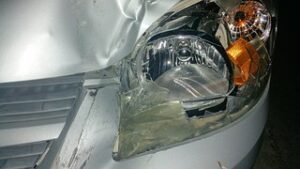Low Speed Collision, No Property Damage, Insurance Denials and Denied Claims
The insurance industry created the argument years ago that low-speed collisions or accidents where the cars are not mangled cannot lead to significant injury, and have successfully argued that position to juries and judges, repeatedly, throughout the country.

Not all doctors think so. As attorney Eric T. Kirk will tell you, “It is wrong to assume that maximum neck injury occurs in a high-speed collision; it is the slow or moderate collision that causes maximum hyperextension of the cervical spine.”1 This abnormal extension of the spine is what tears the soft tissues in the neck and back. It is whiplash. “[R]ear-end impacts of as little as five mph can give rise to significant symptoms.” Tucker, supra.
The insurance company lawyers that argue to a jury that if the cars aren’t damaged, the people cannot be are not going to produce scientific evidence that says there must be more than “X” dollars in property damage before someone can be hurt.
There isn’t any.
That same defense lawyer is not going to produce an engineer to testify that no one can be hurt if the cars are going less than “X” mph.
There aren’t any.
But even without scientific support, the skilled lawyers that the insurance industry retains – or those that work for them outright as ‘in house” counsel- to raise these arguments are adept and sophisticated advocates. These seasoned attorneys have convinced thousands of judges and jurors that someone simply cannot be injured in a case where there is no significant property damage. The prudent, informed injured person, takes steps to counter the efforts of the insurance company to diminish and discount their claim.



